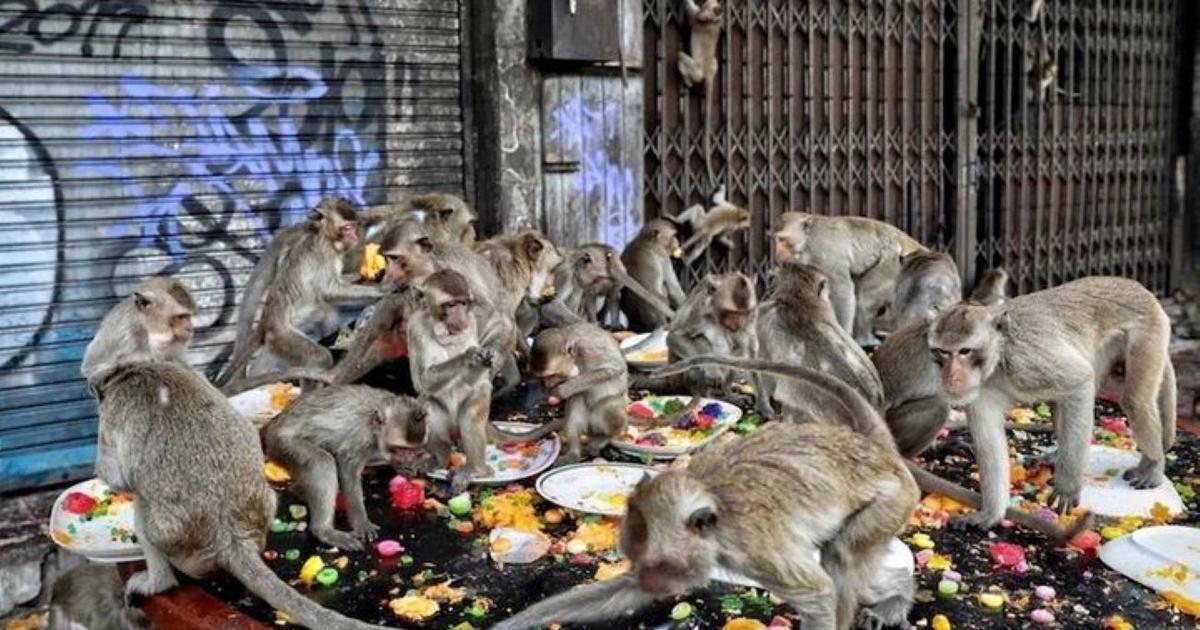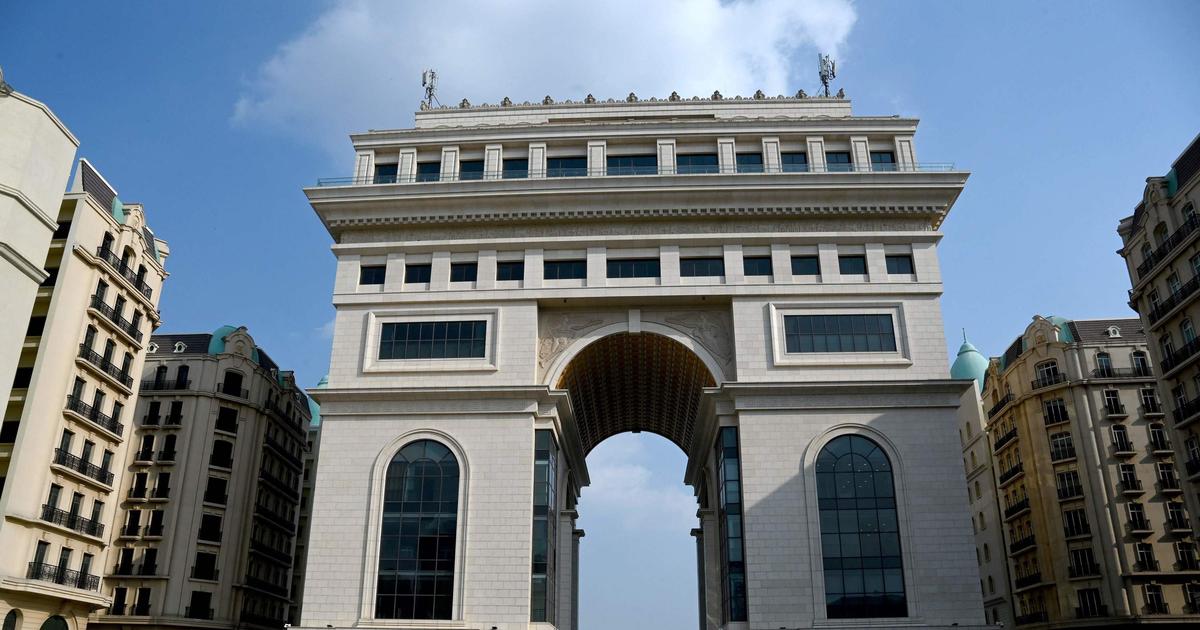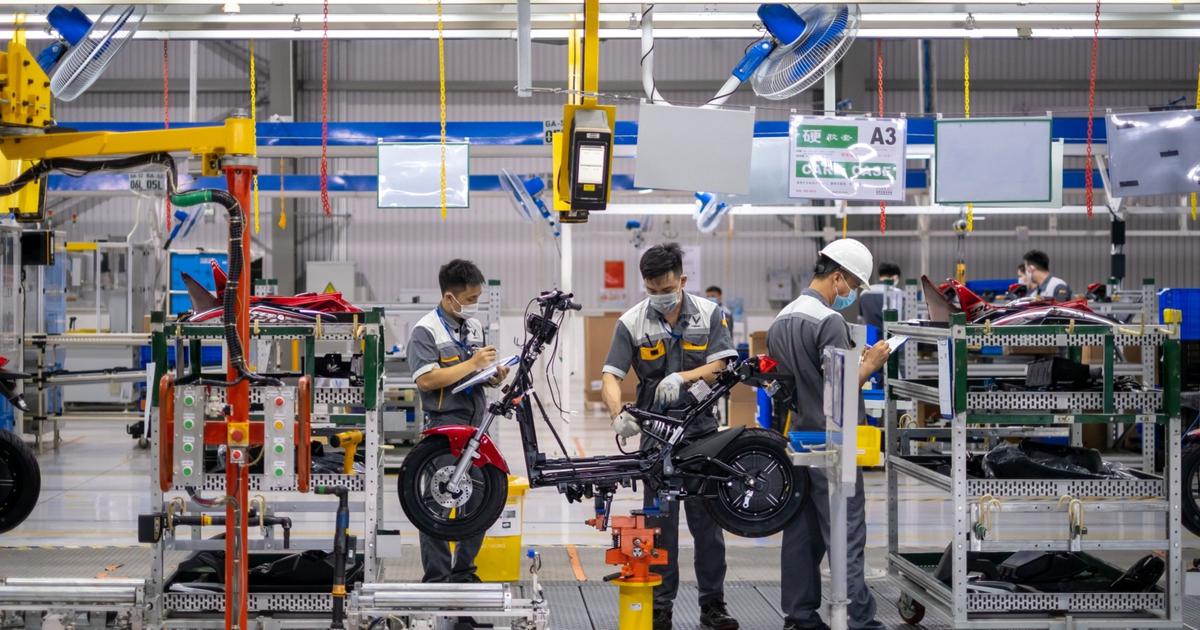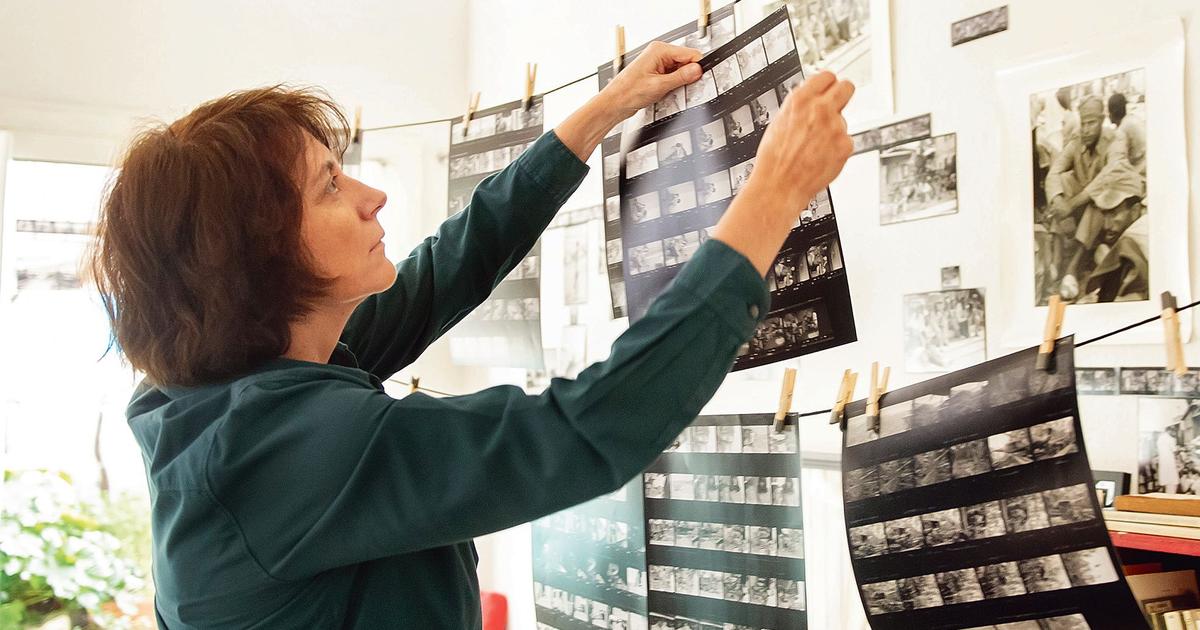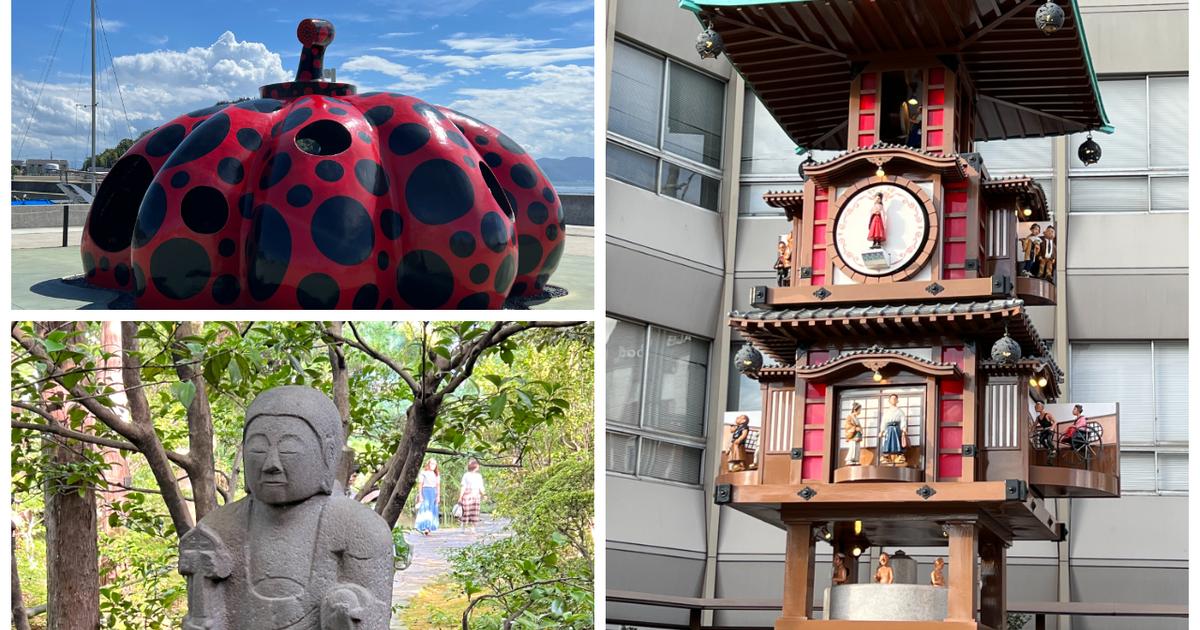Around the temples of Angkor, Cambodia, seven baby bonnet gibbons play in the jungle where this endangered species is benefiting from a reintroduction program.
“
The project is doing very well
,” rejoices Nick Marx, one of the Wildlife Alliance officials, observing the monkeys with black or white fur eating the bananas handed out to them by members of the NGO.
Since 2013, this American structure has been collaborating with Apsara, the public body that manages the Angkor Wat archaeological park and the Cambodian forestry office to repopulate the natural site surrounding the famous remains classified as World Heritage by Unesco.
Smooth-coated otter, barking deer, peacock... Thanks to the program, more than forty endangered animals have found refuge in the 6,500-hectare jungle, long infested with hunters and looters.
“
We released four pairs of bonnet gibbons in the Angkor forest and they bred.
Seven babies were born here
,” says Nick Marx.
Returned animals have been rescued from poachers, or born in captivity to parents rescued from wildlife trafficking.
Read alsoAngkor Wat: our essentials for an unforgettable visit
A still uncertain future
Reintroduction of wild species in the forest of Angkor in Cambodia
Go to slideshow (8)
“
It's a great victory for our project
,” rejoices Chou Radina, Aspara's deputy director in charge of forest management.
Around Angkor, the framework is "
the safest
", according to Nick Marx, to restore the vulnerable fauna, in particular the small primates, because the site benefits from a special status of protection since its registration with Unesco in 1992. But in the face of poaching and deforestation, the future of the animals remains uncertain.
Cambodia is not immune to this illegal trade, "
still persistent
" in Southeast Asia, according to the 2020 report by TRAFFIC, a specialized global monitoring network.
In the small kingdom, the " too light
" sanctions
do not deter hunters, according to this NGO which also denounces the place of Cambodia as a transit zone between Africa and China or Vietnam.
"
Traps and traditional hunting
" also threaten rare wildlife species, admits a spokesman for the Cambodian Ministry of the Environment, who assures that 61,000 traps are removed from forests each year.
In addition to poaching, deforestation makes their preservation even more difficult, according to Nick Marx, whose NGO estimates that it saves 2,000 animals a year.
Read alsoTravel to Cambodia: the
Figaro guide
30% of forest area lost in 20 years
The sanctuary that Wildlife Alliance dedicates to them in Phnom Tamao, an hour's drive from the capital Phnom Penh, is itself threatened by an urban development project.
Between 2001 and 2021, Cambodia lost 30% of its forest area, according to Global Forest Watch (GFW), at a much higher rate than its Thai neighbors (12%), Vietnamese (20%) or Laotian (21%) .
"
If wildlife is driven out of the forests and the forests lose their inhabitants, reintroducing or releasing species will become an increasingly important sign of conservation
," says Nick Marx.
The participants in the program hope that the gibbons will reproduce to continue their repopulation, and that in the long term, they will become an attraction in the same way as the statues of Buddha in Angkor: "
in addition to visiting the temples, the tourists will have a chance to to see nature
”, prophesies Chou Radina.
SEE ALSO
- Brazil reaches the highest level of deforestation for 15 years

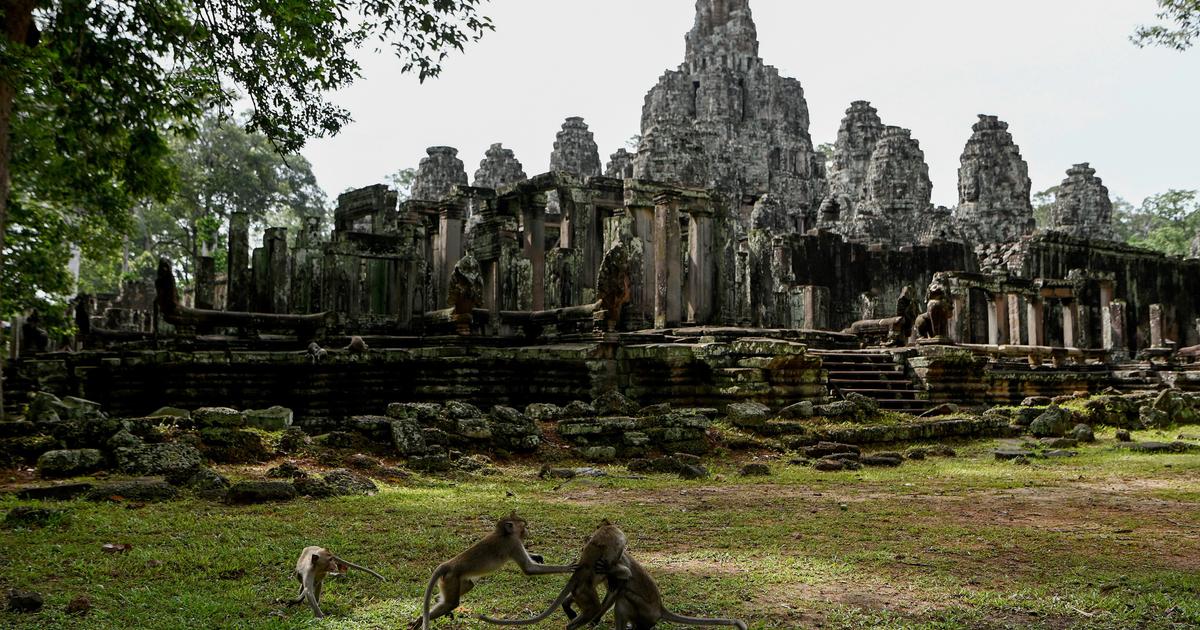
/cloudfront-eu-central-1.images.arcpublishing.com/prisa/VKAU3CAHFNCNNDAK5TUGCDXNIE.jpg)
